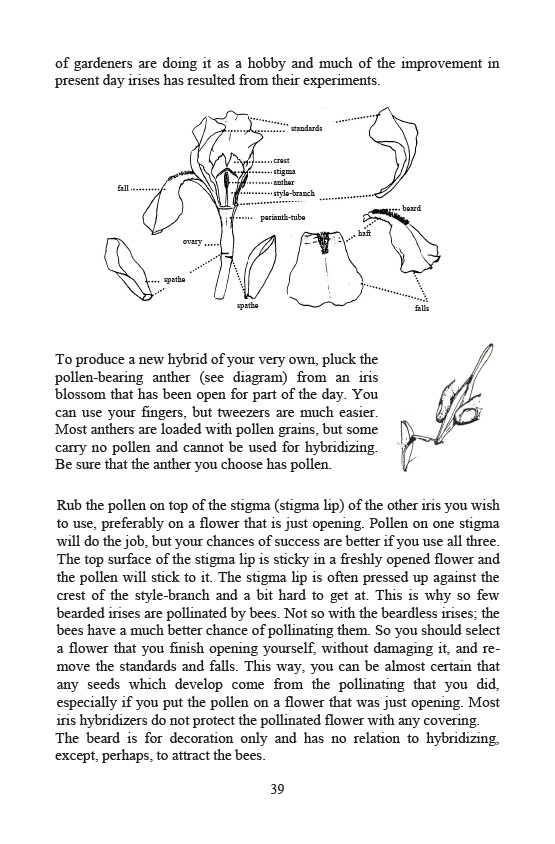
of gardeners are doing it as a hobby and much of the improvement in
present day irises has resulted from their experiments.
perianth-tube
To produce a new hybrid of your very own, pluck the
pollen-bearing anther (see diagram) from an iris
blossom that has been open for part of the day. You
can use your fingers, but tweezers are much easier.
Most anthers are loaded with pollen grains, but some
carry no pollen and cannot be used for hybridizing.
Be sure that the anther you choose has pollen.
Rub the pollen on top of the stigma (stigma lip) of the other iris you wish
to use, preferably on a flower that is just opening. Pollen on one stigma
will do the job, but your chances of success are better if you use all three.
The top surface of the stigma lip is sticky in a freshly opened flower and
the pollen will stick to it. The stigma lip is often pressed up against the
crest of the style-branch and a bit hard to get at. This is why so few
bearded irises are pollinated by bees. Not so with the beardless irises; the
bees have a much better chance of pollinating them. So you should select
a flower that you finish opening yourself, without damaging it, and re-move
the standards and falls. This way, you can be almost certain that
any seeds which develop come from the pollinating that you did,
especially if you put the pollen on a flower that was just opening. Most
iris hybridizers do not protect the pollinated flower with any covering.
The beard is for decoration only and has no relation to hybridizing,
except, perhaps, to attract the bees.
39
fall
spathe
standards
crest
stigma
anther
style-branch
perianth-tube
spathe
ovary
beard
falls
haft